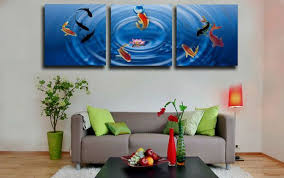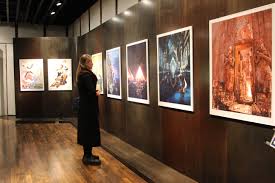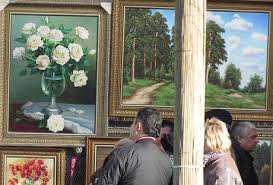Monthly Archives: September 2018
ART UNIONS AND CREATIVE UNIONS OF RUSSIA ON THE TURN OF THE XIX-XX CENTURIES (part 2)
 The Association of New Architects (ASNOVA) is the first organization of innovative architects in post-revolutionary Russia, founded in 1923 in Moscow. The aim of the Association was to develop a new formal-artistic language of architecture, new methods of architectural education. The Association was closely connected with the Faculty of Architecture of Vhutemas, its members (N.V. Dokuchaev, V.F. Krinsky and others) organized a special department there, where teaching was conducted according to the new methodology. In addition, members of ASNOVA appeared in the press on various issues of architecture, and also prepared the publication “Architecture of Vhutemas” (M., 1927). Continue reading
The Association of New Architects (ASNOVA) is the first organization of innovative architects in post-revolutionary Russia, founded in 1923 in Moscow. The aim of the Association was to develop a new formal-artistic language of architecture, new methods of architectural education. The Association was closely connected with the Faculty of Architecture of Vhutemas, its members (N.V. Dokuchaev, V.F. Krinsky and others) organized a special department there, where teaching was conducted according to the new methodology. In addition, members of ASNOVA appeared in the press on various issues of architecture, and also prepared the publication “Architecture of Vhutemas” (M., 1927). Continue reading
ART UNIONS AND CREATIVE UNIONS OF RUSSIA ON THE TURN OF THE XIX-XX CENTURIES (part 1)
 Abramtsevsky (Mamontovsky) art circle – the so-called Representatives of the creative intelligentsia, mainly Moscow, united around the famous businessman and philanthropist S.I. Mamontov. Meetings and meetings of artists and art lovers took place in Mamontov’s house on Spassko-Sadovaya Street, and in the summer, in the Abramtsevo estate near Moscow near Sergiev Posad. Mamontov financially helped artists, supported them with many creative endeavors. The circle existed in 1878-93, while it was never an official society or an art group. Artists often came to Abramtsevo for the whole summer with their families. Here they could work and communicate. In the Abramtsevo circle, the study of Russian history and culture was combined with the desire to revive the traditions of folk art. The estate organized workshops for the revival of ancient art crafts (wood carving, majolica, sewing). Continue reading
Abramtsevsky (Mamontovsky) art circle – the so-called Representatives of the creative intelligentsia, mainly Moscow, united around the famous businessman and philanthropist S.I. Mamontov. Meetings and meetings of artists and art lovers took place in Mamontov’s house on Spassko-Sadovaya Street, and in the summer, in the Abramtsevo estate near Moscow near Sergiev Posad. Mamontov financially helped artists, supported them with many creative endeavors. The circle existed in 1878-93, while it was never an official society or an art group. Artists often came to Abramtsevo for the whole summer with their families. Here they could work and communicate. In the Abramtsevo circle, the study of Russian history and culture was combined with the desire to revive the traditions of folk art. The estate organized workshops for the revival of ancient art crafts (wood carving, majolica, sewing). Continue reading




